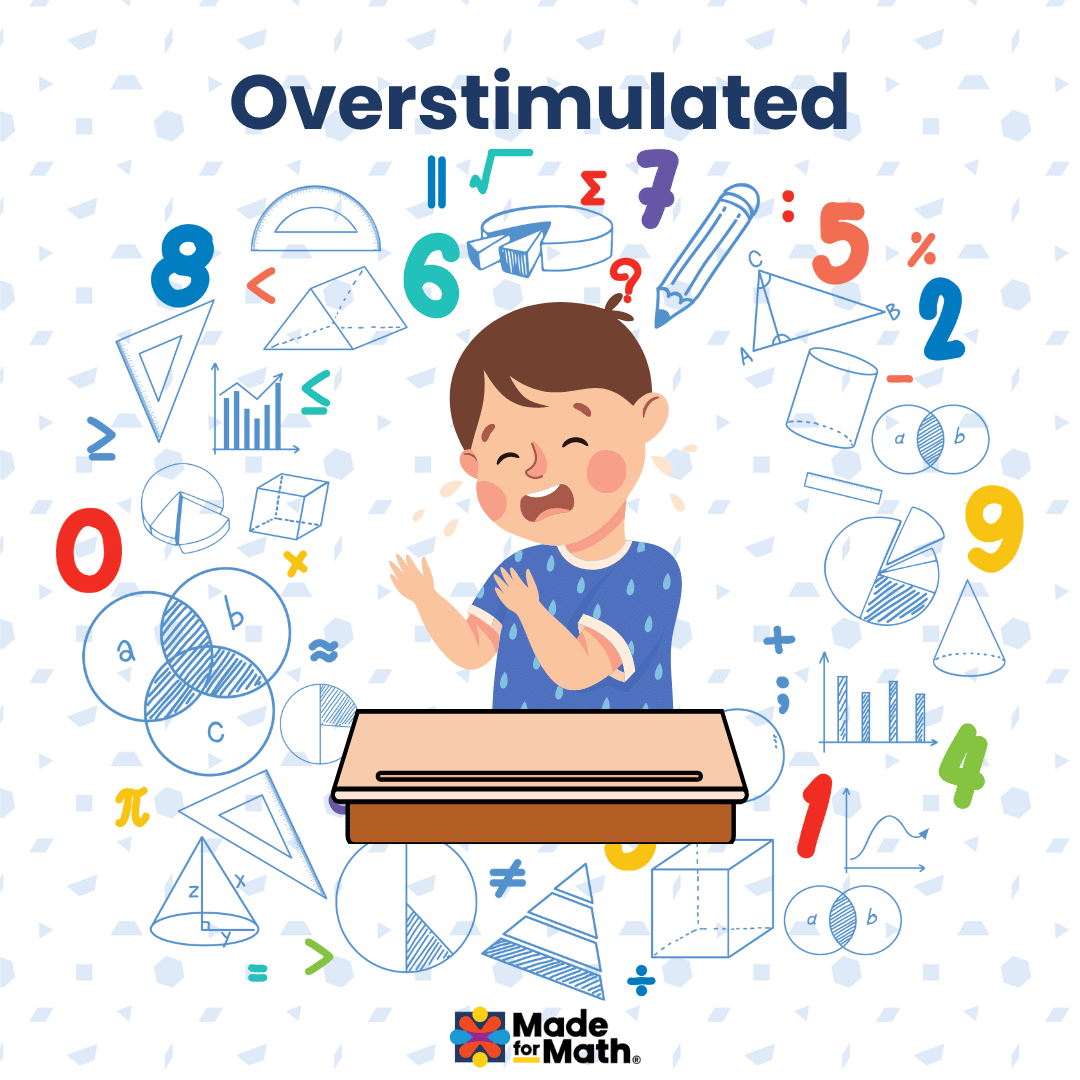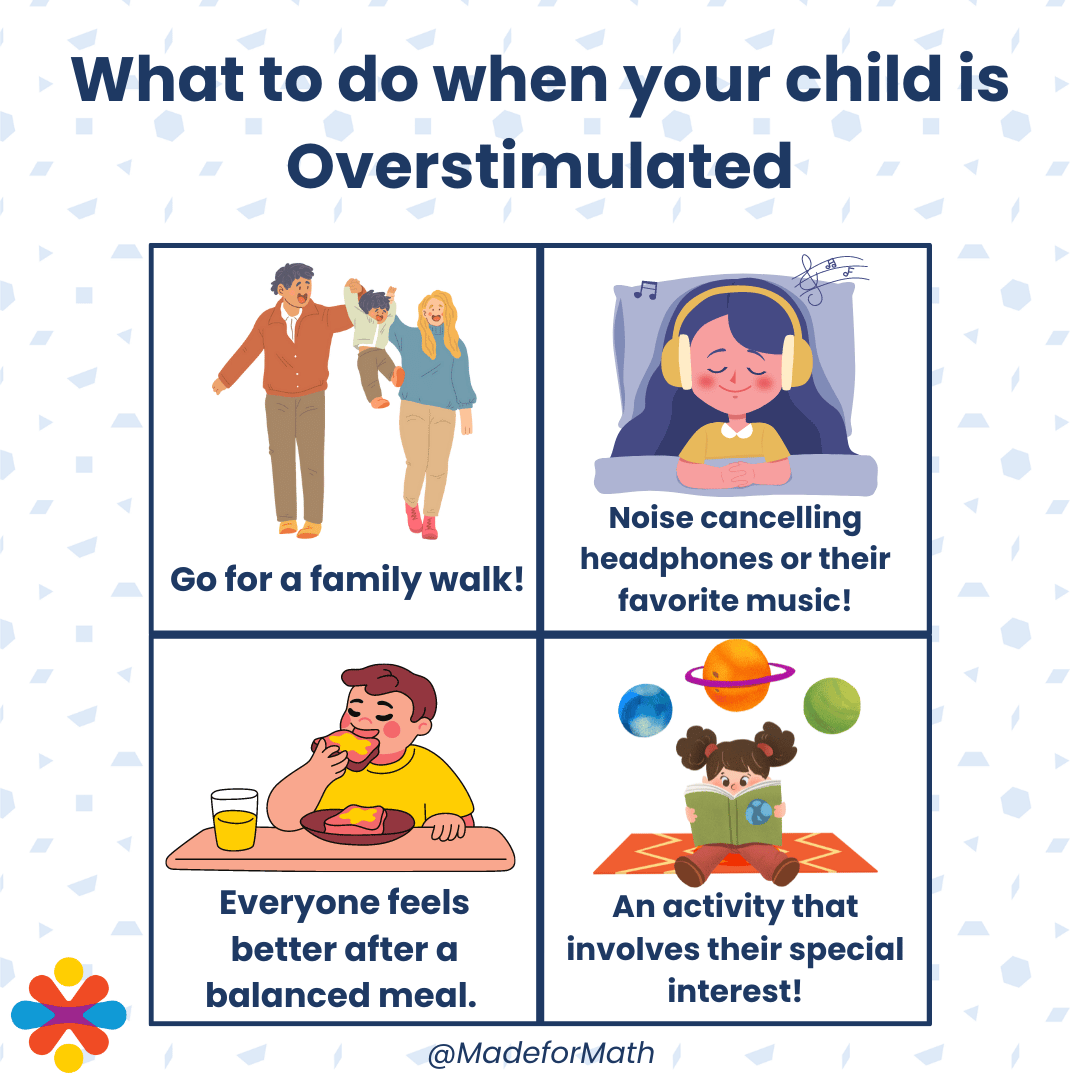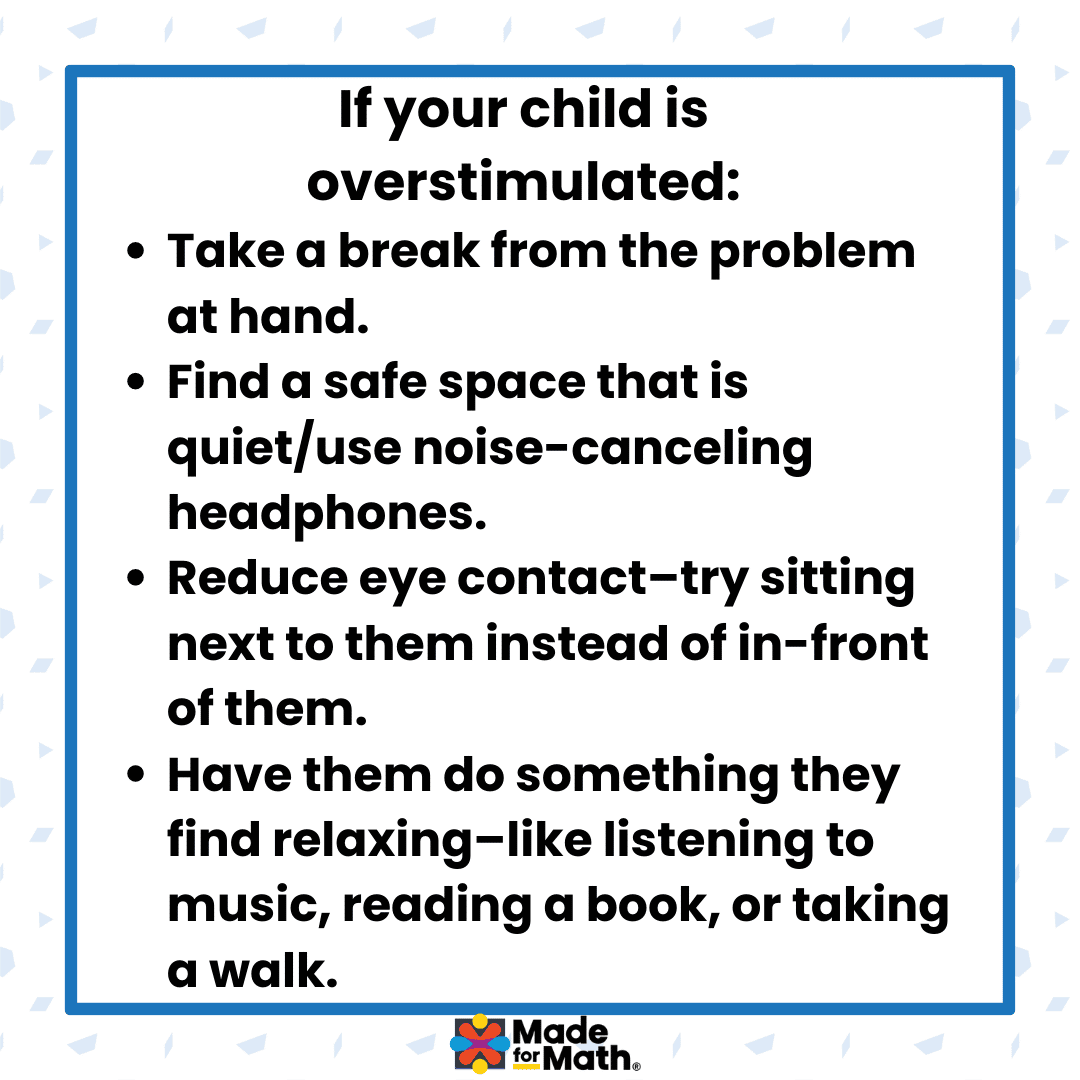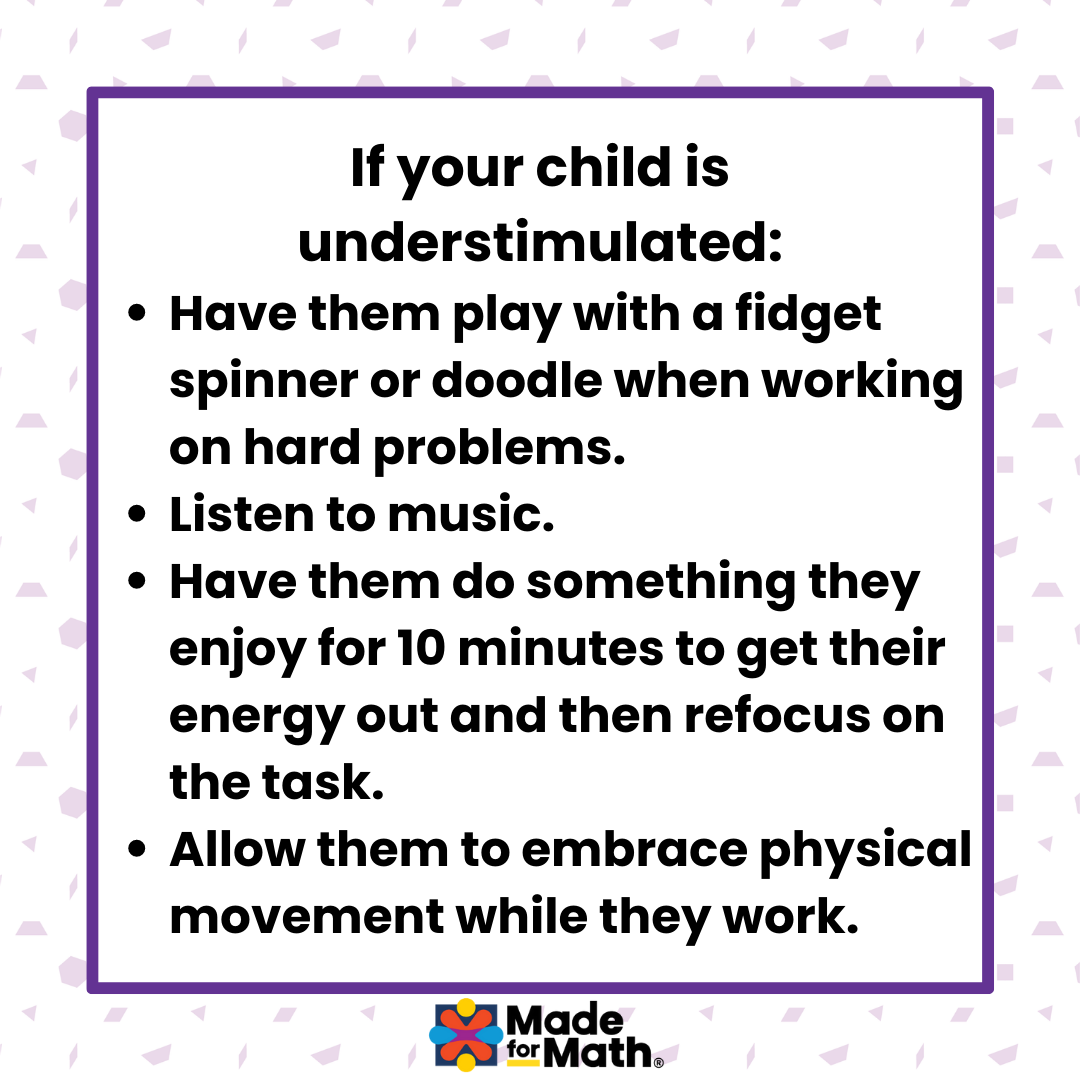Math Anxiety: 3 ways to ease your child’s pain
You feel your chest tighten as soon as you hear the words “students, it’s time for a math pop quiz” come out of your teacher’s mouth. Your breathing starts to quicken and your face suddenly feels like it’s on fire. Your teacher passes out quizzes and you attempt to pull your focus from your clammy hands to the first math problem. It’s a question on long division. You remember your teacher talking about this concept, but you can’t quite picture how she solved the equation. You start to panic. You look at the clock–it’s already been five minutes since she handed out the test and the student across the room just got up to turn in their paper. You think to yourself “How are they already done?” and attempt to pull your focus back to question number one. Six-hundred and ninety-nine divided by three. You’re trying to remember if you should divide or multiply first when another student gets up to turn in their work. You think to yourself, “I must be stupid”.
Sadly, this is an all too familiar script for many students these days. Math Anxiety (MA) makes it nearly impossible for some students to complete math tests and feel confident in their ability. It is the paralyzing fear that can accompany situations where there is time pressure, the risk of embarrassment, imposing authority figures, or even from past math experiences that were traumatic.
Tune into our chat with Kara Scanlon where we’ll be talking about the sources of math anxiety, how it manifests, and how we can treat it.
Table of Contents
Meet Kara Scanlon
Kara is an Educational Therapist with a focus in Math Anxiety for middle school, high school, college and adult students. Her senior year of high school, the Dean of Students pulled Kara aside and asked her to help her classmates with math. Since then, Kara has been helping people overcome their anxieties with math and showing students how they can pull themselves out of a spiral when they aren’t understanding something.
Kara finds that it is socially acceptable to say, “I’m just not good at math” and, sadly, it’s left at that in most settings. We often tell ourselves stories about who we are and what we can and cannot accomplish; a lot of us tell ourselves that we just aren’t “math people”.
Math Anxiety: What does it look like?
Kara says that kids will say things like, “I can’t do this”, “I’ll never learn this, I’m stupid”, or “Math is stupid” when they are experiencing math anxiety.
Psychologically, when your brain gets anxious it impairs your working memory and it starts to shut down. Your normal ability to think through problems and hold pieces of information is gone. This leads to trouble remembering facts and not being able to focus on the problem at hand.
Physically, when you’re anxious, you start to develop an upset stomach, sweaty palms, and increased heart rate which eventually leads to panic attacks and your body going into fight, flight, or freeze mode.
Fight or Flight: How math anxiety manifests
School can be incredibly traumatic for children–their body hangs onto this trauma in the same way it would if they were experiencing food scarcity. Why? Kara explains that your brain doesn’t know the difference between trauma from food scarcity and trauma from school. You can die from not having food, but you’re not going to die from not being able to learn math. However, your brain doesn’t know that. It’s reacting to trauma in the same way: with fight or flight.
Trauma responses can be really intense because your brain is kicking into fight or flight mode and all of the physical manifestations that come with that. Your body shuts down when this happens and it can hold onto that trauma for years. When you don’t unpack the trauma and find a safe space to learn math your body will shut down to math of any kind.
Kara claims that when kids aren’t supported in the ways they need there are two avenues: inward and outward. When students go inward they develop this crippling feeling of being unworthy. This is where a lot of anxiety comes from and when they don’t ask for help it becomes very isolating. Or sometimes students go outward and start blaming others for their problems. Both responses are damaging to the student. Some children are faced with academic trauma after trauma surrounding learning and they are pushed into a place where they believe that they are a failure. How can they ask for help?
Learn more about math trauma by reading Academic Wounding here.
Do our children know how to ask for help?
When a child is faced with repeated academic trauma they will start to pull away from learning. In an attempt to avoid that panic and anxiety, the brain completely shuts down. Some children are never taught how to ask for help when they are struggling. Some are told to get over things without ever addressing the real problem.
Kara believes we need to teach children the words they should use when they don’t understand a concept. We have to show them how to ask for help or else they will never speak up when they need support. You can do this by helping them understand that when something doesn’t make sense to them, they can ask the teacher to explain it in a different way.
Where is the source of Math Anxiety?
We talked about how trauma can be the source of math anxiety, but more broadly our school system does not prioritize having a safe, consistent, and calm learning environment. It’s not the teachers or the administrators fault that this is the case, either, Kara explains.
This problem is multilayered, from the result of schools being underfunded to the lack of respect for teachers these days. Most schools do not have the resources to help every child in the exact way that that child needs to be helped. The consequence is children don’t learn math. Not because they are unable to, but because it is not taught in a language or manner they understand.
A lot of children do not have a good relationship with math. They’ve never had a calm and nurturing environment where someone explained to them why they should learn math. Kara has worked with kids who started out with no respect for math and after four years they now tolerate it. This is a huge win, because that small shift in mindset allows that child to say “Yeah, math isn’t my favorite subject, but I see the utility in it”.
Of course, some children are born with poor number sense or lower ability to reason mathematically. This is anxiety-inducing for children. Knowing that their classmates are doing math faster than them or the fear of being called on to solve the problem in front of the class can be paralyzing for a child.
We forget that children are often going through the worst thing that they’ve ever experienced because they are so young. Kara uses the example that you wouldn’t get mad at a baby crying because they have a spoiled diaper. That diaper is the worst thing the baby has ever experienced in the same way that math problems are the most difficult thing our children have had to sit with.
Overcoming Math Anxiety
The work that Kara does with her students revolves around calming them down when they start to feel anxious. She says that the ability to sit in discomfort with a problem is a huge life skill that students with MA struggle with.
Often students give up as soon as they become frustrated. Kara teaches them to sit with the frustration by calming down their breathing and minds. She talks with them about their special interests to get their mind off math and being overwhelmed. They do grounding exercises by playing with fidget toys to get their anxieties out and then begin the work to change their state of mind.
Talking about things that the student loves gets them to a happy place where they are able to be calm in their bodies. Once they are relaxed, then they are able to talk more about the thing that gives them anxiety. Kara encourages parents to do physical activities with their children, like going for a walk, so they can ground and get the sensory input that they need.
If the student is in the middle of a panic attack, then helping them focus on their breathing and the rise and fall of their chest can help. Sometimes students can become over or understimulated–if they are overstimulated they are overwhelmed and need less stimuli, when they are understimulated they need more input and more stimuli.
Click through these pictures to view accommodations
How teachers can create an environment where their students feel safe
Rather than getting annoyed with students who are unable to do their math homework, we should be trying to understand their perspective. Kara mentions that children don’t always get their emotions validated and listened to–they’re just kids, right? The number one thing you can do for a child who is struggling with math anxiety is listen to and validate them.
Kara reminds us that we are not at our best everyday and that’s okay. Communicating with our children when we aren’t having a good day will, in turn, help them communicate to you when they’re struggling.
Besides listening to these students and talking to them about their issues, teachers can also ease MA by offering unlimited test retakes. This takes a load off their anxiety level when they know they are able to try again. We rarely let children retake tests and try again–this is farther from the truth of adult life. If you are an artist and your client doesn’t like your design you get to redraw it for them.
Another teacher hack is to have a drawing section on the back of tests. This way, when a student is done they simply flip their paper over and it looks like they’re still working. This eliminates the anxiety inducing fear that everyone is finishing their work before you.
Children want to learn. If you provide an environment where children aren’t afraid to fail because of the consequences, then they take more leaps of faith. They will accomplish more hard things because you have demonstrated to them that it isn’t scary to fall–it’s only scary if you never get back up.
No child should think, “I must be stupid” because they aren’t being taught math in a way that’s right for their brain.
💡 Get Ideas for Your Child's IEP Accommodations 💡
Our team created a super handy-dandy accommodations generator with custom suggestions based on your child’s unique needs! In 5-minutes or less, you’ll have a professional report complete with information about ideas to help your child succeed in the classroom.
MFM Authors

Jennie Miller
Marketing Assistant
is our Marketing Assistant and content creator here at Made for Math. Jennie loves being part of a company that is working to make mathematics accessible to children with dyscalculia.






